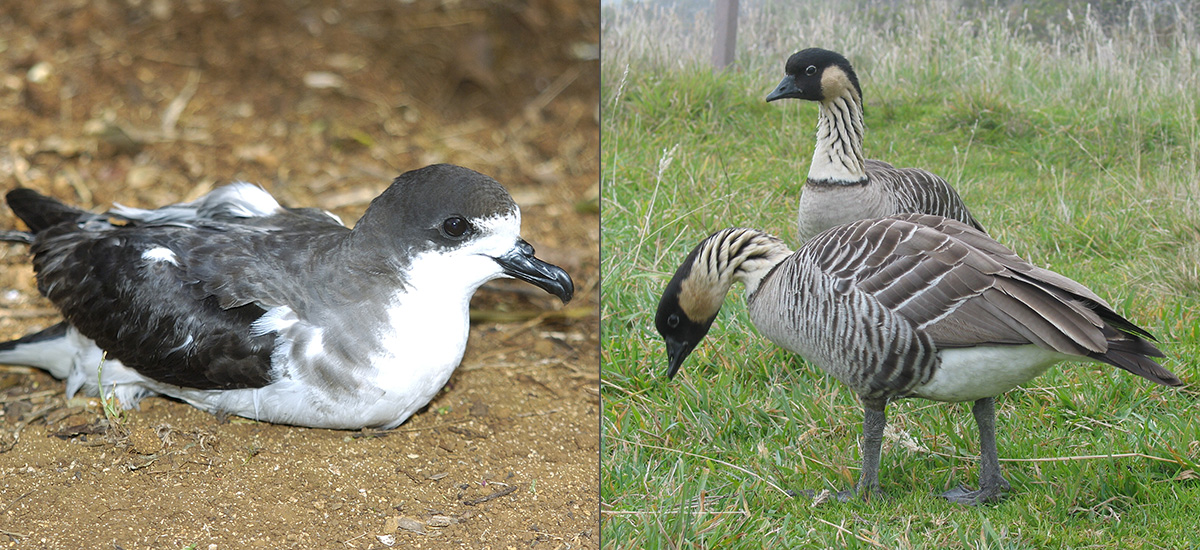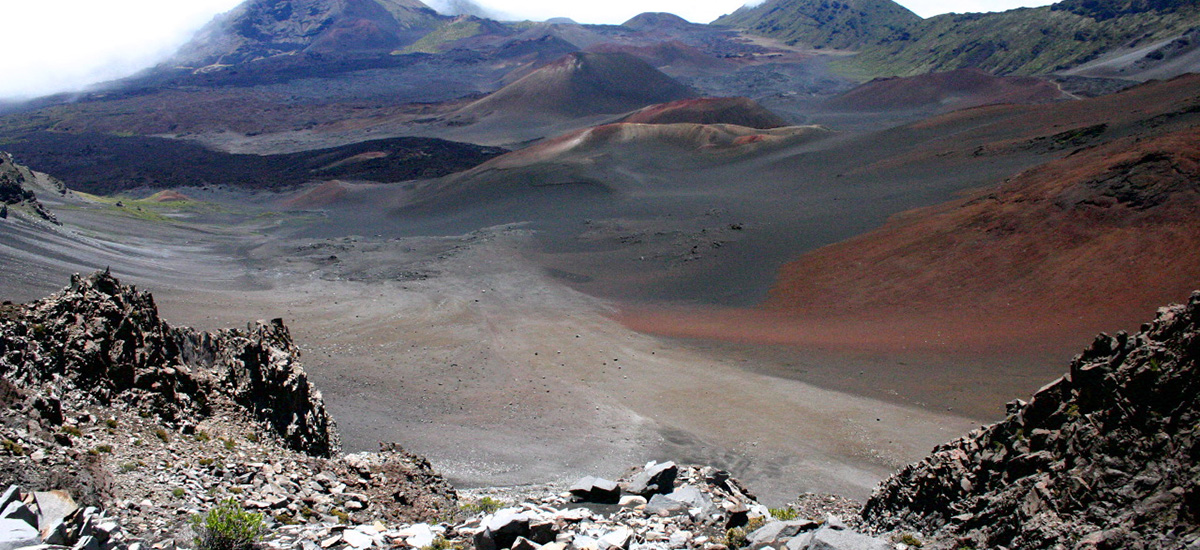For Joy Tamayose ’88, conservation is a way of life
November 19, 2025 — Joy Tamayose ’88 has been working with the National Parks Service to protect Hawaii’s endangered native birds for nearly 25 years.
Despite the longest federal government shutdown in American history, Tamayose’s work went on even while she was furloughed. That’s just part and parcel of being a wildlife biologist with the National Park Service (NPS), where ecological and biological imperatives like mating and fledgling season don’t always neatly overlap with the federal fiscal year.
“Conservation is not just a job,” she says, “it’s a way of life.”
 Left: The 'ua'u, also known as the Hawaiian petrel, is a vulnerable bird species at Haleakalā National Park. Photo by Jim Denny. Right: The nēnē is the only goose-like species left in Hawaii.
Left: The 'ua'u, also known as the Hawaiian petrel, is a vulnerable bird species at Haleakalā National Park. Photo by Jim Denny. Right: The nēnē is the only goose-like species left in Hawaii.
Tamayose works at Haleakalā National Park, on the Hawaiian Island of Maui, with federally endangered and threatened bird species like the 'ua'u (the Hawaiian petrel) and the nēnē (the Hawaiian goose). These birds, which exist only on the Hawaiian Islands, sat precariously close to extinction and aren’t out of the woods yet. The 'ua'u, she says, once nested all the way from the ocean to Haleakalā, but now they tend to be restricted to the upper reaches of the island that haven’t been “degraded, manipulated, and changed by habitat loss, human development, and predators.”
Tamayose has worked at Haleakalā for more than three decades. She feels incredibly fortunate because a permanent park position with the Park Service can be quite rare, even more so when it’s a park that’s located on the island where she born and raised.
She grew up in Haiku, a rural area on Maui, on a pineapple farm that her family owned.
“I was always outdoors, and I knew I wanted to do something with animals,” she says. In addition to her affinity for rural places and interest in the sciences, specifically biology, she knew she wanted to go to a small college. She first learned about Grinnell from a Maui high school science teacher, who knew of the College because a former student had gone to Grinnell: Deborah Hirose-Ridao ’84, a physician in Honolulu.
Norma Dang ’53, a now retired dentist who lives in Hawaii, reached out to Tamayose after learning of her interest and was a strong influence on her decision to attend Grinnell. They’ve remained in touch over the years.
Tamayose’s happened to arrive in Grinnell amid the family farm crisis of the 1980s. Just as many family farms across Iowa and the Midwest were going under, Tamayose’s family farm was facing dire financial prospects, too. Her coursework was challenging, but her family’s financial precarity made things even more difficult and often she wondered whether she’d be able to afford to stay at Grinnell.
“Every year,” she recalls, “I remember crying whenever I met with the College treasurer. It was such a hard time financially. I am so grateful for the compassion and help the staff provided.”
 A crater view from the summit area of Haleakalā National Park in Maui shows off the beauty of the park.
A crater view from the summit area of Haleakalā National Park in Maui shows off the beauty of the park.
There were times when she contemplated putting her education on hold to come home and try to help her parents save the family farm. Her father knew that losing the farm was an inevitability and persuaded her to stay. “There’s nothing you can do, Joy,” she recalls him saying. When her parents were unable to attend graduation, her advisor and plant physiology professor, Diane Robertson, and her husband Jack, pinch hit for them.
Upon returning to Maui, Tamayose worked five different jobs including as a veterinary technician. While the loss of the family farm was emotionally and economically devastating, it did eventually mean that Tamayose’s father was no longer pouring every single ounce of his energy into trying to find a way to hold onto the farm.
Together, he and Joy began volunteering for conservation organizations like the Native Hawaiian Plant Society, the Sierra Club, and the Nature Conservancy. One day, she saw an ad for a job with the Research Corporation of the University of Hawai’i in the local paper that involved working with endangered bird species at Haleakalā. She applied, inspired by the volunteer conservation work she and her dad had been doing, and began working there in 1992. “It seemed like a good change,” she recalls.
After nine years there, she was offered the opportunity to get a fully funded master’s degree in wildlife science at Oregon State University. It was, for a moment, a time where she finally felt like she could focus entirely on her studies. Not long after she began though, her father got sick, and she returned home to be one of his primary caregivers.
After her dad recovered, she completed her degree, with her field work focused on the nēnē. “We had so many goose-like species in Hawaii.” she says, “They’re all gone except the nēnē.”
One thing that Tamayose never loses sight of in her work is how much work people had to do, over many generations, just to get these birds back to the fragile position that they’re in today. Conservation is a never-ending battle and there’s still a long way to go, but it’s all worth it whenever someone gets to see “the spark” that birds like the nēnē and 'uu'a possess. “The little victories are important,” Tamayose says.
—by Joe Engleman ’14